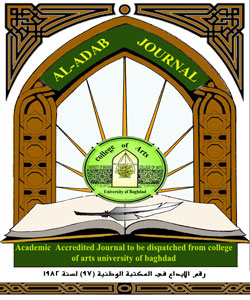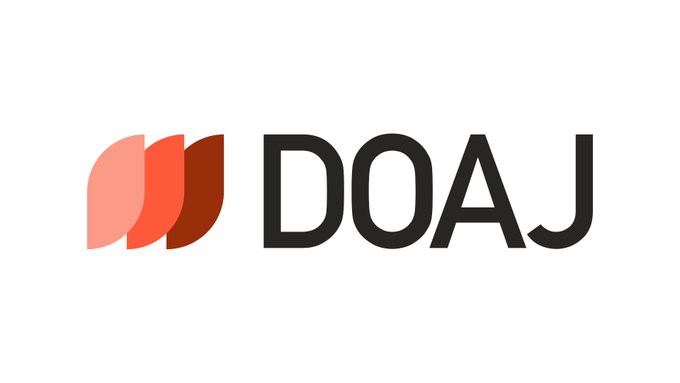فعالية التعليم المدمج من وجهة نظر طلبة وطالبات جامعة الشارقة في ضوء سياسات واستراتيجيات الجامعة
DOI:
https://doi.org/10.31973/aj.v1i135.887الكلمات المفتاحية:
التعلم المدمج، التعلم التقليدي، التعليم، الجامعةالملخص
تهدف هذه الدراسة إلى معرفة مدى فعالية تطبيق التعليم المدمج في جامعة الشارقة من وجهة نظر طالبات جامعة الشارقة ، وذلك من خلال التركيز على خمس محاور : قياس توافر آليات التعليم المدمج ، و فعالية هذه الآليات لتحقيق الأهداف التعليمية ، ومدى تأثر المستوى التعليمي لطلاب تبعاً لاستخدام هذا النوع من التعليم ، ومعوقات استخدام التعليم المدمج في الجامعة وأخيراً رؤية وتطلعات عينة الدراسة نحو التعليم المدمج . وتم استخدام الاستببان لغرض الدراسة وشملت العينة 200 طالب من جامعة الشارقة.
وقد أظهرت النتائج أن هناك اتفاقاً عالياً بين الطلاب على أهمية هذا النوع من التعليم مقابل التعليم التقليدي و استخدام آليات التعليم المدمج و المتمثلة في "الحاسب الآلي ، توفير مقرر الكتروني،أجهزة العرض، الفيديو"،و فيما يتعلق بفاعلية هذه الآليات يتبين أن هناك اتفاق عالي بين طلاب ويؤكد ذلك تأثر تحصيلهم الدراسي بشكل ايجابي حيث أن 64% قد ارتفع معدلهم الدراسي بعد استخدام التعليم المدمج ، أما بالنسبة للمعوقات فهي متدرجة وتتمثل في "انخفاض الوعي بالتعليم المدمج ، الأعطال المفاجئة في شبكة الانترنت ، عدم توفر وقت كافي للمناقشات، جهل الطالب بتعامل مع تقنيات ومهارات التعلم المختلفة "، وتتجسد الرؤى والتطلعات في رغبة العينة بتطوير هذا النوع من التعليم على حساب التعليم التقليدي بجعل الصفوف التعليمية مجهزة لذلك وكذا الأساتذة وعمل دورات تدريبية فصلية لهم لاستخدام تقنيات ومهارات التعليم المدمج .
التنزيلات
المراجع
Adas, D. (2018). Students’ Frequencies and Performance in Blended Learning as Correlated to their Attitudes.
Alammary, A., Sheard, J., & Carbone, A. (2014). Blended learning in higher education: Three different design approaches. Australasian Journal of Educational Technology, 30(4).
Al-Anzi, Marzouq. (2018), education offered. Al-Messila Publishing and Distribution House, Kuwait.
Al-Ghamdi, Fawzia Abdul Rahman (2011), The effect of applying education using the Blackboard learning management system on the achievement of female students in the course of educational media production at King Saud University, unpublished master’s thesis, Department of Education Technology, Deanship of Graduate Studies, King Saud Group, Riyadh
Al-Harthy, Iman Bint Awad, 2011, The Effectiveness of a Proposed Program in Learning Technology Based on Integrated Learning in Developing Use Skills and Attitudes Towards it for Female College of Education Students, Unpublished Doctorate Thesis, Department of Curricula and Teaching Methods, College of Education, Umm Al-Qura University, Saudi Arabia.
Al-Hijaya, Nile "The reality of e-learning in Jordanian universities." International Specialized Educational Journal, 2013, vol. 2, p. 2, pp. (140-151).
Al-Huneidi, A., & Schreurs, J. (2011, September). Constructivism based blended learning in higher education. In World Summit on Knowledge Society (pp. 581-591). Springer, Berlin, Heidelberg.
Al-Otaibi Fahd, 2011, and the use of e-learning in the academic year at King Saud University and the attitudes of students towards it, an unpublished MA dissertation, Department of Educational Technology, Deanship of Graduate Studies, King Saud University, Riyadh.
Al-Qarni, Saeed bin Fazaa, "Evaluating King Saud University's Experience in Using the Web CT System in Supporting Teaching" (Unpublished Master Thesis), College of Education, King Saud University, Saudi Arabia, 2007.
Anthony Giddens, Sociology, translation: Fayez Al-Sabbagh, Center for Arab Unity Studies, Beirut, 2005, pp. 525-526. Anthony Giddens, Sociology, translation: Fayez Al-Sabbagh, Center for Arab Unity Studies, Beirut, 2005.
Awad, Munir, "The extent to which the faculty members in the Jordanian colleges of education possess the competencies of educational technology and practice them from their point of view" (unpublished Master Thesis), Yarmouk University, Jordan, 2003.
Azizan, F. Z. (2010). Blended learning in higher education institution in Malaysia. In Proceedings of regional conference on knowledge integration in ICT (Vol. 10, pp. 454-466).
Bliuc, A. M., Goodyear, P., & Ellis, R. A. (2007). Research focus and methodological choices in studies into students' experiences of blended learning in higher education. The Internet and Higher Education, 10(4), 231-244.
Chen, C.C. & Jones, K.T. (2007). Blended learning vs. Traditional classroom
El-Gazzar, Mona Ahmed, Asr, Ahmed Mostafa, 2009, Designing an educational environment based on the integrated training pattern to develop the skills of using electronic learning environment management systems for faculty members and their assistants, The Future of Arab Education, Egypt, 62-9.
Gülbahar, Y., & Madran, R. (2009). Communication and collaboration,
Jwailes, A. T. A. (2015). Using Technology in Teaching Literary Courses: Using Blended Learning to Teach American Literature Course.
KM Eshreteh, M., & Hisham Siaj, A. (2017). Attitudes of english-major students and teachers towards using blended learning in the english department at Hebron University. International Journal of Research in English Education, 2(4), 51-65.
Leem, J & Lim, B. “The Current Status of E -Learning and Strategies Enhance Educational Competitiveness in Korean Higher Education, Online Submission” International Review of Research in Open Distance Learning ,2006, 8(1),18pp, (ED496160)
López-Pérez, M. V., Pérez-López, M. C., & Rodríguez-Ariza, L. (2011). Blended learning in higher education: Students’ perceptions and their relation to outcomes. Computers & education, 56(3), 818-826.
satisfaction, equity, and autonomy in blended learning environments: A case from Turkey.International Review of Research in Open and Distance Learning, 10(2), 117-138.
settings: Assessing effectiveness and student perceptions in an MBA accounting course. The Journal of Educators online, 4(1), 1-15.
Shawaheen, good. (2016), Inclusive Education and Curriculum. Modern Book World for Publishing and Distribution, Jordan.
Shawish, J. A., & Shaath, M. A. (2017). (Al-Quds Open University Learners’ Attitudes towards Blended Learning (BL. المجلة الفلسطينية للتعليم المفتوح والتعلم الإلكتروني, 3(6).
Wallace, Shabby, Wolf, Alson. (2011). Contemporary theory in sociology extends the horizons of classical theory, translated by Muhammad Abdul Karim Al-Hourani, Jordan, Majdalawy House for Publishing and Distribution.
Yamani, Hana E-Learning, to face the challenges facing Saudi higher education in light of the age of information technology requirements. (Unpublished Master Thesis), College of Education, Umm Al-Qura University, Saudi Arabia, 2006.
التنزيلات
منشور
إصدار
القسم
الرخصة
:حقوق الطبع والنشر والترخيص
بالنسبة لجميع البحوث المنشورة في مجلة الآداب، يحتفظ الباحثون بحقوق النشر. يتم ترخيص البحوث بموجب ترخيص Creative Commons CC BY 4.0 المفتوح ، مما يعني أنه يجوز لأي شخص تنزيل البحث وقراءته مجانًا. بالإضافة إلى ذلك ، يجوز إعادة استخدام البحث واقتباسه شريطة أن يتم الاستشهاد المصدر المنشور الأصلي. تتيح هذه الشروط الاستخدام الأقصى لعمل الباحث وعرضه.
:إعادة إنتاج البحوث المنشورة من الناشرين الآخرين
من الضروري للغاية أن يحصل الباحثون على إذن لإعادة إنتاج أي بحث منشورة (أشكال أو مخططات أو جداول أو أي مقتطفات من نص) لا يدخل في نطاق الملكية العامة أو لا يملكون حقوق نشرها. يجب أن يطلب الباحثون إذنًا من مؤلف حقوق النشر (عادة ما يكون الناشر).
يطلب الإذن في الحالات التالية:
بحوثك الخاصة المنشورة من قِبل ناشرين آخرين ولم تحتفظ بحقوق النشر الخاصة بها.
مقتطفات كبيرة من بحوث أي شخص أو سلسلة من البحوث المنشورة.
استخدم الجداول والرسوم البيانية والمخططات والمخططات والأعمال الفنية إذا لم يتم التعديل عليها.
الصور الفوتوغرافية التي لا تملك حقوق لنشرها.
لا يطلب الإذن في الحالات التالية:
إعادة بناء الجدول الخاص بك مع البيانات المنشورة بالفعل في مكان آخر. يرجى ملاحظة أنه في هذه الحالة يجب عليك ذكر مصدر البيانات في شكل "بيانات من ..." أو "مقتبس من ...".
تعتبر عروض الأسعار القصيرة معقولة الاستخدام العادل ، وبالتالي لا تتطلب إذنًا.
الرسوم البيانية ، الرسوم البيانية ، المخططات ، الأعمال الفنية التي أعاد الباحث رسمها بالكامل والتي تم تغييرها بشكل ملحوظ إلى درجة لا تتطلب الاعتراف.
الحصول على إذن
لتجنب التأخير غير الضروري في عملية النشر ، يجب أن تبدأ في الحصول على أذونات في أقرب وقت ممكن. لا يمكن لمجلة الآداب نشر بحث مقتبس من منشورات أخرى دون إذن.
قد يمنحك مالك حقوق الطبع والنشر تعليمات بشأن شكل الإقرار الواجب اتباعه لتوثيق عمله ؛ بخلاف ذلك ، اتبع النمط: "مستنسخ بإذن من [المؤلف] ، [كتاب / المجلة] ؛ نشره [الناشر] ، [السنة]." في نهاية شرح الجدول ، الشكل أو المخطط.
.jpg)























